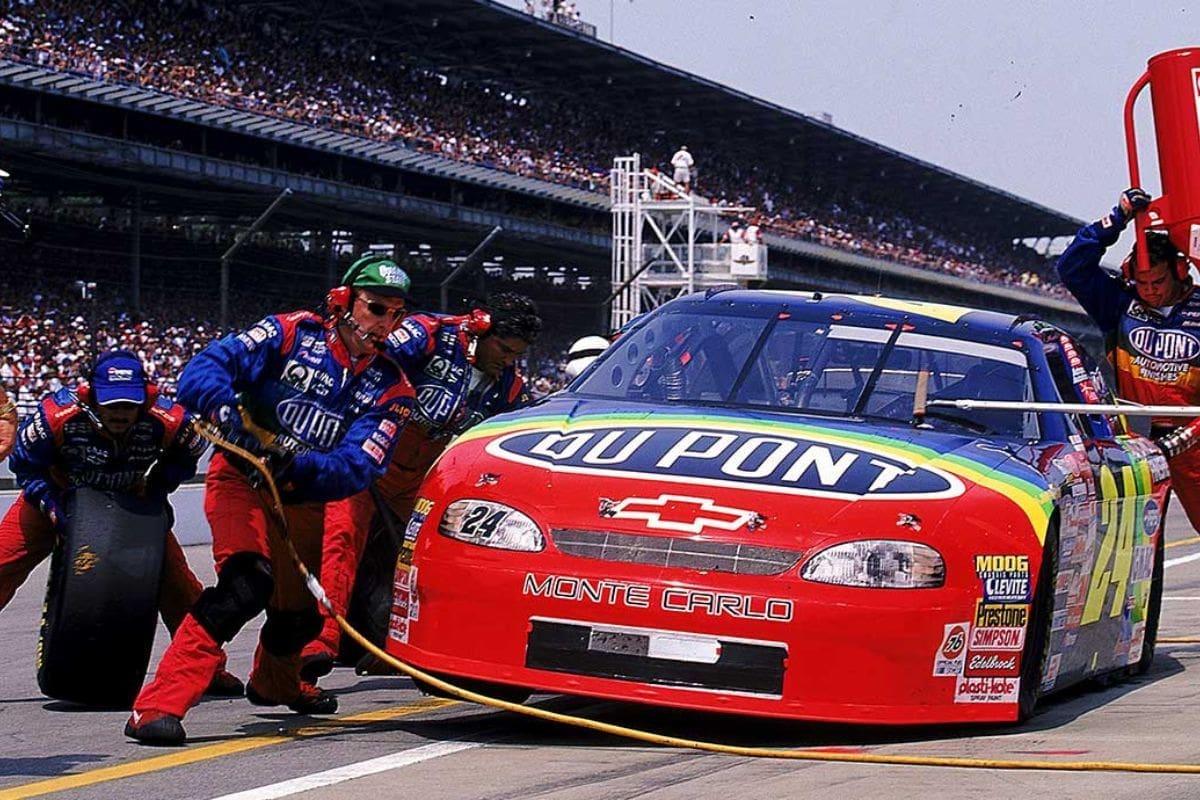Revolutionary Tire Changes: Amidst the serene hills of New England, NASCAR’s elite are gearing up for another test of skill and strategy at New Hampshire Motor Speedway. As the Cup Series descends upon the “Magic Mile,” all eyes are not just on horsepower and handling, but on a crucial element that could tip the scales of competition: Goodyear’s latest tire innovations. Following recent trials and adjustments aimed at enhancing grip and performance, the stage is set for a weekend that promises both thrills and technical intrigue. How these advancements will impact race dynamics remains to be seen, but one thing is certain—New Hampshire’s storied oval is about to witness racing at its most calculated and competitive.
Recent Tire Developments in NASCAR
As the NASCAR Cup Series gears up for another thrilling weekend of racing at New Hampshire Motor Speedway, all eyes are on the latest advancements in tire technology that promise to redefine competition on the track. With recent trials at North Wilkesboro and Iowa Speedway providing valuable insights, NASCAR and Goodyear have embarked on a proactive journey to fine-tune their tire strategies, aimed at maximizing the performance potential of the Next Gen car.
The initiative to introduce these tire developments comes amidst a broader effort to enhance the overall racing experience in the Cup Series. Following collaborative discussions involving key stakeholders such as Cup drivers, NASCAR officials, and Goodyear representatives, significant strides have been made in optimizing tire performance to align with the demands of the Next Gen era. These discussions have been pivotal in identifying areas for improvement, particularly in terms of tire durability, grip levels, and overall handling characteristics.
At the forefront of these developments is the integration of new tire compounds and configurations designed to elevate on-track dynamics. The recent trials at North Wilkesboro and Iowa Speedway provided crucial data points, allowing engineers to fine-tune tire specifications for the unique challenges presented by each track. This iterative process underscores NASCAR’s commitment to delivering competitive and compelling racing, driven by continuous innovation in tire technology.
The upcoming race at New Hampshire Motor Speedway serves as a testing ground for the latest advancements in tire performance. Building on insights gained from previous races, Goodyear has refined its approach by introducing adjustments that enhance tire durability and heat retention. These enhancements are expected to promote greater tire wear over the course of a run, leading to more strategic racing scenarios characterized by varying levels of performance degradation.
“NASCAR teams have always been in a search for grip at Loudon.”
“We’ve made a couple adjustments for our tire set-up for this track over the past year-plus, as we continue to work on the short track racing package.”
“After adding more grip at Loudon in 2023 with a tread compound change, we’ve rolled in a change that we have on all of the short tracks for this season by increasing the tread gage. That move helps the tire maintain more heat over a run which will, in turn, lead to more fall-off and more passing.” – Greg Stucker, Goodyear’s director of racing
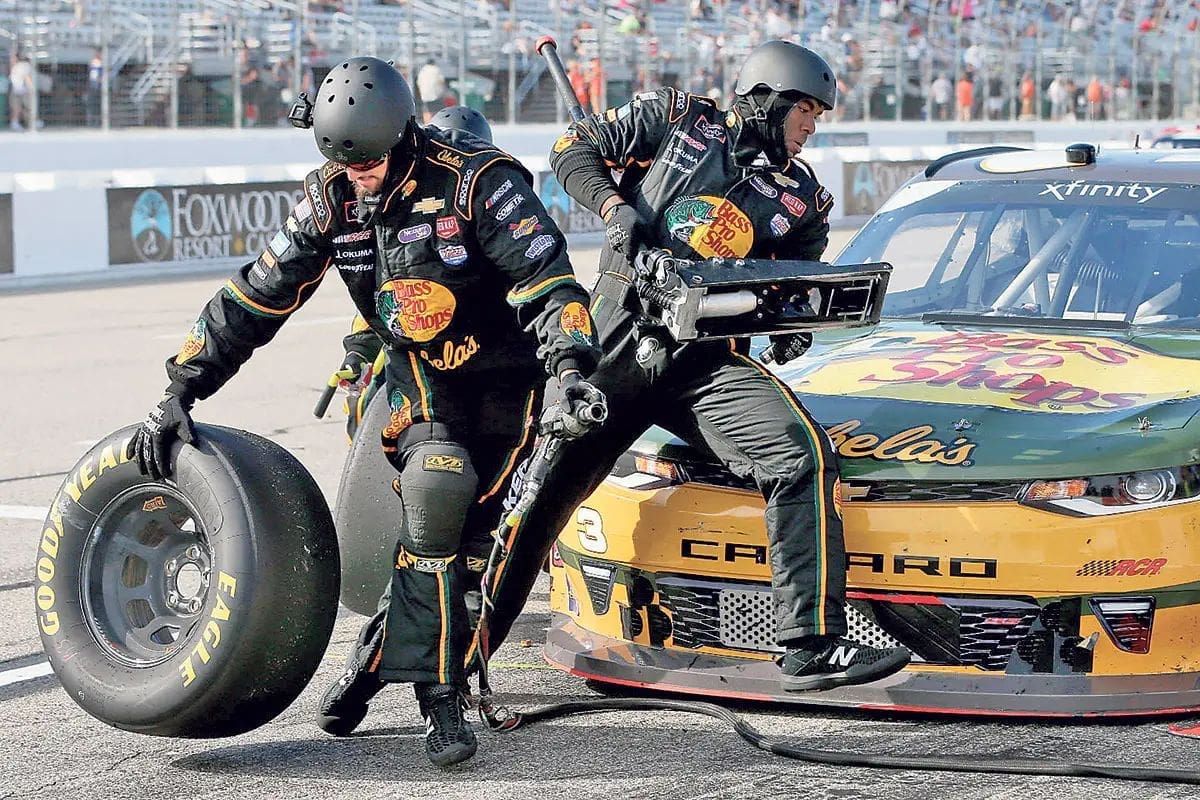
Debut of Softer Tire Compound at New Hampshire
In a bid to elevate competition and enhance racing dynamics in the NASCAR Cup Series, NASCAR and Goodyear unveiled a new softer tire compound during the race at New Hampshire Motor Speedway one year ago. This innovative step was the result of extensive collaborative efforts involving Cup drivers, NASCAR officials, and Goodyear representatives, all united in their goal to optimize performance with the Next Gen car.
The introduction of the softer tire compound marked a significant milestone in NASCAR’s ongoing evolution. Designed to provide increased grip and responsiveness, the new compound aimed to address feedback from drivers seeking enhanced handling characteristics and the ability to push their cars to the limit on the challenging New Hampshire oval. This move underscored NASCAR’s commitment to embracing technological advancements that not only improve racing on-track but also enhance the overall fan experience.
Throughout the race weekend, drivers and teams experienced firsthand the impact of the new tire compound on performance. The softer compound offered improved traction and cornering capabilities, allowing drivers to maneuver more confidently through the tight turns of New Hampshire Motor Speedway. This adjustment not only contributed to closer competition but also presented new strategic opportunities as teams navigated the balance between tire wear and performance throughout the race.
Martin Truex Jr.’s dominant performance during the race served as a testament to the effectiveness of the new tire compound. Leading an impressive 254 of the 300 laps, Truex Jr. showcased the compound’s capability to withstand the rigors of competitive racing while maintaining consistent performance. His commanding victory highlighted the compound’s potential to level the playing field and create more compelling racing scenarios on track.
The debut of the softer tire compound at New Hampshire Motor Speedway not only signaled a progressive step in NASCAR’s pursuit of enhanced racing dynamics but also underscored the collaborative spirit between NASCAR, Goodyear, and drivers in shaping the future of the sport. As NASCAR continues to innovate and refine its tire technologies, fans can expect even more thrilling and competitive racing in the seasons to come.
Impact of New Hampshire Tire Change
The introduction of a softer tire compound at New Hampshire Motor Speedway last year brought significant anticipation and expectations for increased passing and closer competition in the NASCAR Cup Series. Designed to enhance grip and maneuverability, the tire change aimed to inject new dynamics into the race, offering drivers more opportunities to challenge for positions throughout the field.
However, the actual race day outcomes painted a mixed picture of the tire’s impact. Despite the tire change’s intention to foster more passing opportunities, the race unfolded with Martin Truex Jr. emerging as the dominant force. Truex Jr. showcased his mastery of the new tire compound by leading an impressive 254 out of 300 laps, ultimately securing a commanding victory that underscored the performance consistency and durability of the new tires.
The dominance of Truex Jr. throughout the race highlighted the dual nature of tire development in NASCAR — while changes aim to promote parity and competitiveness among drivers, they also underscore the prowess of teams in adapting to new technologies. Truex Jr.’s ability to capitalize on the advantages offered by the softer compound not only secured his victory but also served as a testament to the strategic and technical acumen required to succeed in NASCAR’s highly competitive environment.
Reflecting on the race, drivers and teams acknowledged the challenges and opportunities presented by the new tire compound. While some drivers may have struggled to optimize performance with the new setup, others like Truex Jr. thrived under the conditions, demonstrating the potential for the softer tire compound to influence race outcomes and strategies moving forward.
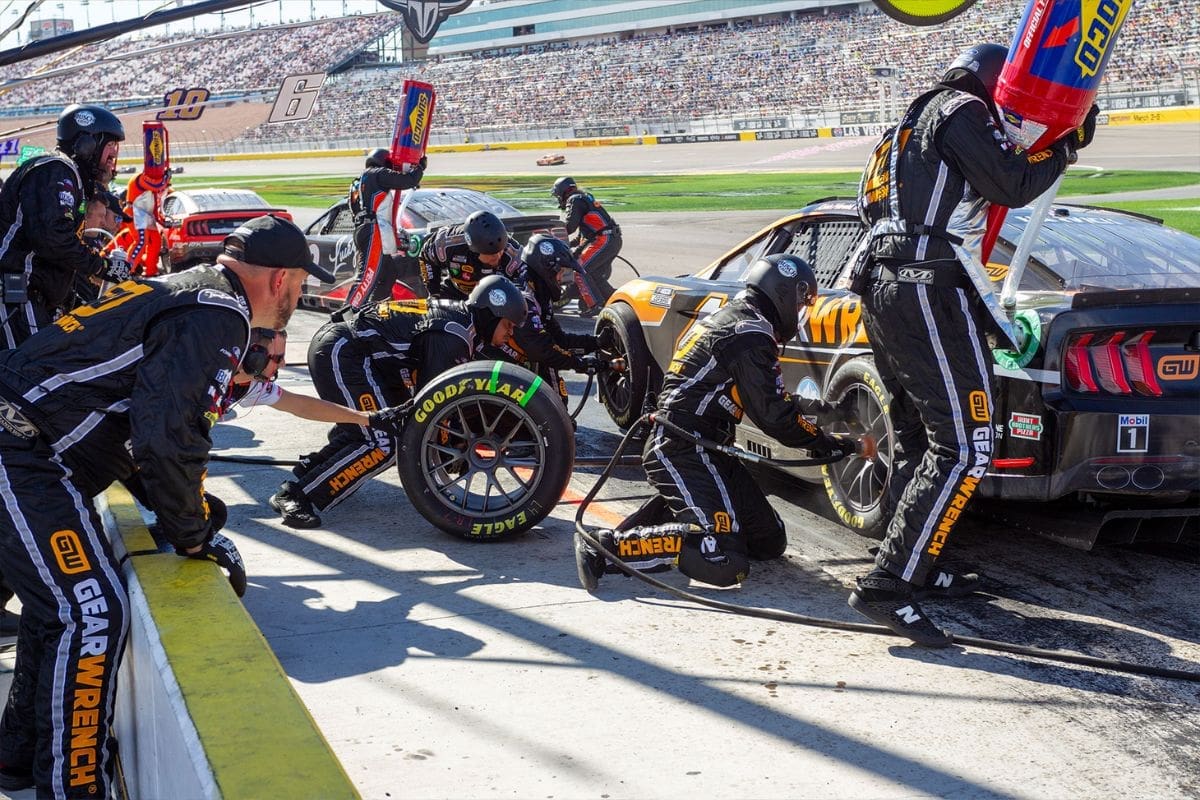
Goodyear’s Tire Strategy for New Hampshire
Greg Stucker, Goodyear’s director of racing, has outlined a strategic approach to tire management at New Hampshire Motor Speedway, focusing on enhancing race dynamics and competitiveness in the NASCAR Cup Series. Building on adjustments made in 2023 aimed at boosting grip through a tread compound change, Goodyear has implemented a new initiative for the current season: increased tread gauge across short tracks.
This strategic enhancement is designed to address specific challenges presented by tracks like New Hampshire Motor Speedway, where maintaining tire performance over long runs is crucial. By increasing tread gauge, Goodyear aims to improve tire heat retention, thereby promoting more consistent performance throughout the race. This adjustment is expected to enhance tire wear characteristics, allowing drivers to manage their tires more effectively and potentially leading to more strategic race outcomes
“Goodyear’s tire strategy for New Hampshire Motor Speedway reflects our ongoing commitment to innovation and performance in NASCAR,” stated Greg Stucker. “Following the success of previous adjustments, we’ve intensified our focus on improving tire heat retention and overall durability. These enhancements are pivotal in creating opportunities for increased passing and dynamic racing scenarios.”
The implementation of increased tread gauge underscores Goodyear’s proactive approach to tire development, aligning closely with feedback from drivers and NASCAR officials seeking to optimize on-track competition. As teams prepare for the upcoming race weekend at New Hampshire Motor Speedway, the strategic implications of these tire enhancements are poised to shape race strategies and outcomes, highlighting the critical role of tire technology in the evolving landscape of NASCAR racing.
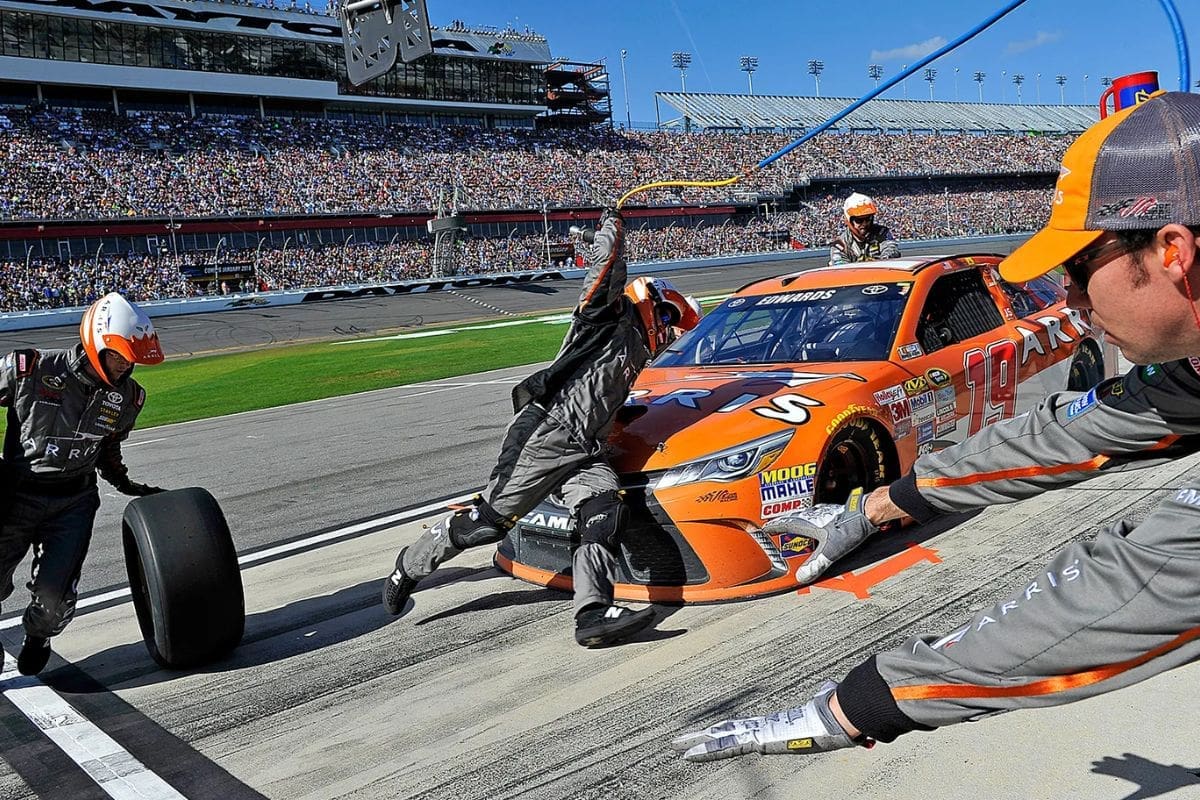
Preparation for Wet Weather Contingencies
As NASCAR prepares for another thrilling race weekend at New Hampshire Motor Speedway, Goodyear is taking proactive measures to ensure safety and competitiveness in the event of inclement weather. With rain forecasted for the weekend, Goodyear has announced plans to provide Cup teams with a maximum of four sets of wet weather tires, demonstrating a commitment to delivering safe and competitive racing experiences in all weather conditions.
The decision to introduce wet weather tires at New Hampshire follows a successful deployment at Richmond earlier in the season. This strategic move underscores NASCAR’s dedication to adapting to variable weather conditions while maintaining high standards of safety and performance on the track. Wet weather tires are designed to enhance traction and control in wet and slippery conditions, allowing drivers to navigate challenging race scenarios with confidence.
“Goodyear’s preparation for wet weather contingencies at New Hampshire Motor Speedway reflects our ongoing commitment to supporting NASCAR’s commitment to safety and competitive integrity,” stated a spokesperson for Goodyear. “The introduction of wet weather tires ensures that teams are equipped to handle unpredictable weather conditions while maintaining the highest standards of performance and safety.”
The availability of wet weather tires provides teams with added flexibility in race strategy, allowing them to adapt quickly to changing weather conditions without compromising performance. This contingency plan highlights Goodyear’s role as a key partner in NASCAR’s efforts to enhance race day readiness and ensure the smooth execution of races under any circumstances.
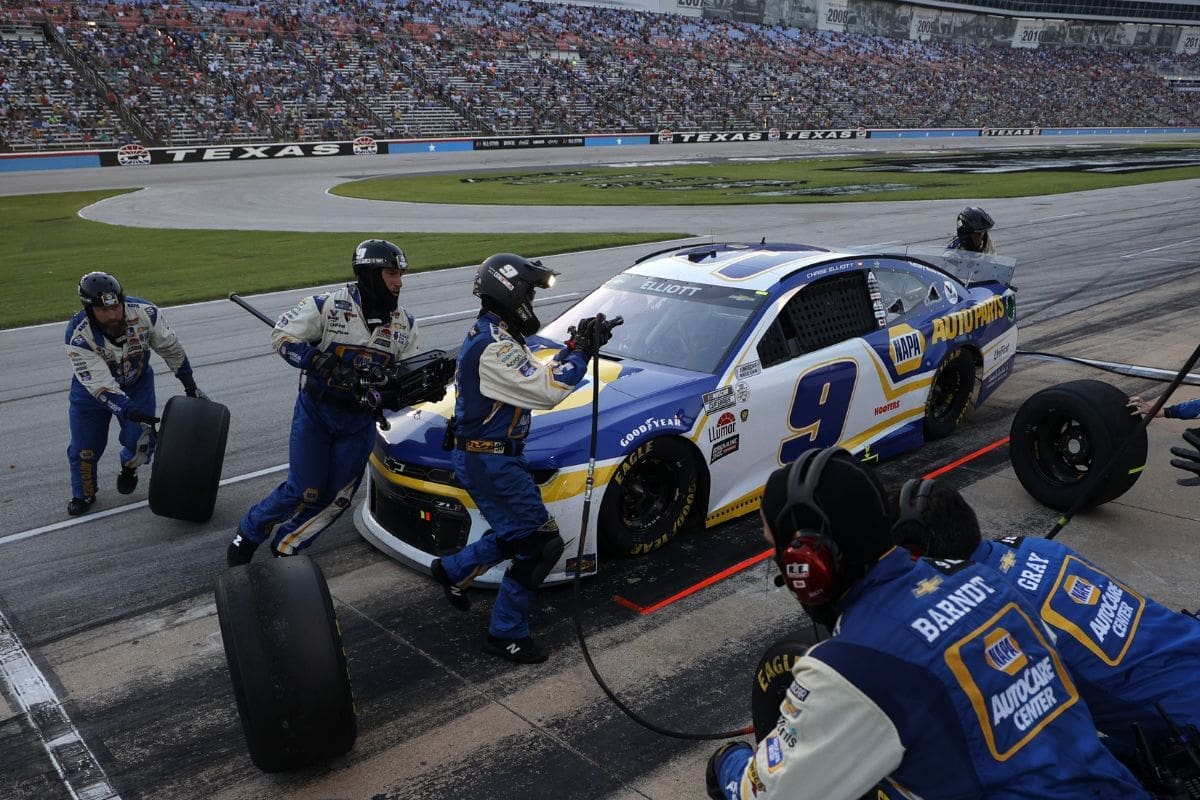
News in Brief: Revolutionary Tire Changes
As the sun sets over New Hampshire Motor Speedway and the echoes of horsepower fade into the dusk, one can’t help but reflect on the role of innovation in NASCAR’s relentless pursuit of excellence. Goodyear’s tire strategies, from softer compounds to wet weather contingencies, have not only shaped the outcomes on track but have underscored the sport’s commitment to evolution and adaptation.
As we look ahead to future races and the challenges they will bring, one thing is clear: the partnership between NASCAR and Goodyear continues to drive progress, ensuring that each lap at the “Magic Mile” is a testament to speed, strategy, and the pursuit of victory in America’s premier racing series.
Our Reader’s Queries
Q. What does NASCAR use to change tires?
A. Using air wrenches, the tire changers will remove the lug nuts on their assigned tires, working on one side of the car at a time. They then take off the old tire, allowing the tire carrier or Jackman to position the new tire, which the changers then secure by bolting it on.
Q. What tool does NASCAR use to change tires?
A. That’s why an air gun, or impact wrench, is essential for NASCAR crews. Utilizing compressed air, it swiftly removes and replaces lug nuts. With these high-powered tools, NASCAR crews can change all four tires in under 20 seconds.
Q. How many tire changes are in a NASCAR race?
A. Strategy will be crucial. Teams will have nine sets of tires for the weekend: five sets of primes and four sets of options. For preliminaries (practice, qualifying, heats, Open), they’ll get three sets of primes and two sets of options. For the main event, they’ll have two sets each of primes and options.
ALSO READ: NASCAR’s Wet-Weather Tire Debut: Game-Changer at Richmond!

